(also known as Mendez #1)
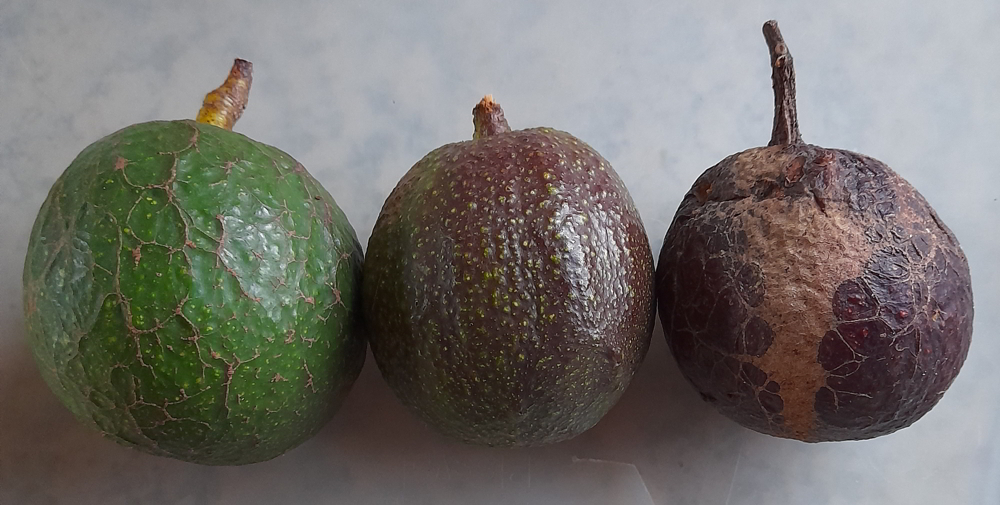
Origin
Carmen-Hass was selected (and later patented) from a Mexican Hass orchard in Michoaca because of its consistent 'off season' cropping. In some years, some Hass trees in avocado orchards in Mexico have flowers outside the normal spring season. This late summer flowering matures its fruit in early winter, when the normal crop is in short supply in the markets. This burst of flowering is called the 'Loca' crop in Spanish. Loca means 'crazy'. Crazy because it is not the normal time of year for Hass to be cropping, and crazy because there is often a very good apparent fruit set, only for the pin-head sized fruitlets to fall off. As a result, there is rarely much of an 'off-bloom' crop. The fruitlets possibly fall because temperatures are not warm enough for long enough to retain the embryonic fruit. It is only in those years of unseasonable warmth that the loca crop produces well.
'Off season' flowering is not confined to Mexico. It is a well known phenomenon in some 'normal' Hass trees in some years in New Zealand. Some trees have a very modest and protracted flowering from march onwards, in some years right through winter to 'join up' to the normal spring flowering. Fruit set is usually either very light or zero, and the winter part of this long flowering phase generally don't set any fruit at all, again, presumably because it is too cold. As in the Mexican experience, in some years initial set of 'off-season' flowers looks promising, but either all, or almost all, fall off.
However, in the late 1980's a tree in a Mexican commercial Hass orchard was noticed which consistently bore 'out of season' flowers. It not only had a loca crop every year, it regularly held the fruitlets to full maturity, producing good quality fruit at a time of year when the main Hass crop had yet to start. The commercial value was obvious, especially as high quality Carmen fruit are available in june- September in Mexico - a time when there are few good quality avocados available in the key USA export market. Realizing its commercial importance, the discoverer, Carlos Mendez Vega, propagated and multiplied the tree. He supplied trees to surrounding orchards, and he also top-worked some of his own commercial Hass trees with this unusual form of Hass. The pattern of regular out of season bloom and fruiting continued. Over the next decade or so, enough blocks of trees were established that the fruit began to be recognized as a distinct form of Hass, and it became known as the 'Mendez type'. Ultimately, the Mendez Hass was imported into USA, re-named, and patented.
Hass-Carmen™ is patented in New Zealand, and at 2012 is being made available solely to growers. As at 2018, around 1,500 trees are being trialled around New Zealand, according to the NZ Avocado Industry Council
The name 'Hass Carmen® 'is a registered trademark, as well as being the strictly correct name for the variety. Inevitably it will end up being colloquially referred to as as 'Carmen-Hass', or perhaps simply 'Carmen'.
The tree
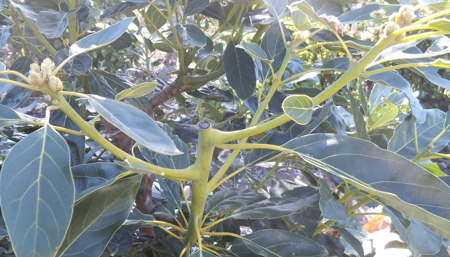 Carmen
is probably a bud sport of the conventional Hass. A molecular
marker comparison was done in 1996, and at least some
differences were identified, but details are murky. It is
nearly identical in appearance to any Hass tree, although
there are claims it is less open. The tree has a further flush
from the tips of the branches carrying its out-of-season
flowers, so this may partly explain the denser foliage.Its
growth pattern is to produce relatively thick but short soft
new initial growth. This takes longer than Hass does to
mature, but once mature the tree tends to produce numerous new
laterals.
Carmen
is probably a bud sport of the conventional Hass. A molecular
marker comparison was done in 1996, and at least some
differences were identified, but details are murky. It is
nearly identical in appearance to any Hass tree, although
there are claims it is less open. The tree has a further flush
from the tips of the branches carrying its out-of-season
flowers, so this may partly explain the denser foliage.Its
growth pattern is to produce relatively thick but short soft
new initial growth. This takes longer than Hass does to
mature, but once mature the tree tends to produce numerous new
laterals. Carmen might be able to be trained as a single leader tree. I pruned new laterals on my young trees to force branching closer to the trunk (especially near the top of the trees). Well established young Carmen seems to flush vegetatively very vigorously, and pruning out of new vegetative growth had to be done regularly until a period of extended dry in mid summer. The picture on the left shows 3 shorter laterals that have grown out and matured flower buds from a summer pruned vegetative shoot.
Carmen is regarded as precocious, being quick to come into bearing from planting out.
Flowering
Like the normal Hass, Carmen-Hass flowers in spring, and matures a 'main crop' from about december onward. But, unlike Hass, Carmen has another flush of flowers in mid to late summer. The fruit from this flowering matures from late winter onward. Occasionally, early summer flowers mature a small crop in late autumn.
In 2014, several young trees here developed some flowering panicles in early autumn (late march). This was after a very warm dry period from mid summer extending into late march and beyond. Daytime temperatures at that time anything from about 22oC to 31oC, and nights were almost uniformly over 10oC. Skies have been largely clear. Conditions are ideal for pollination.
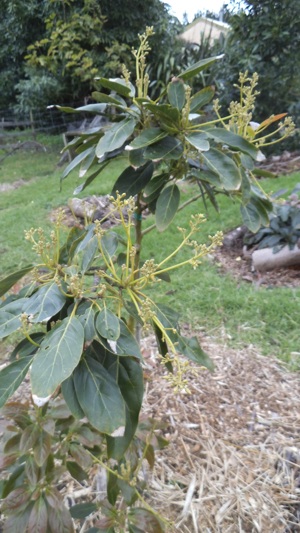
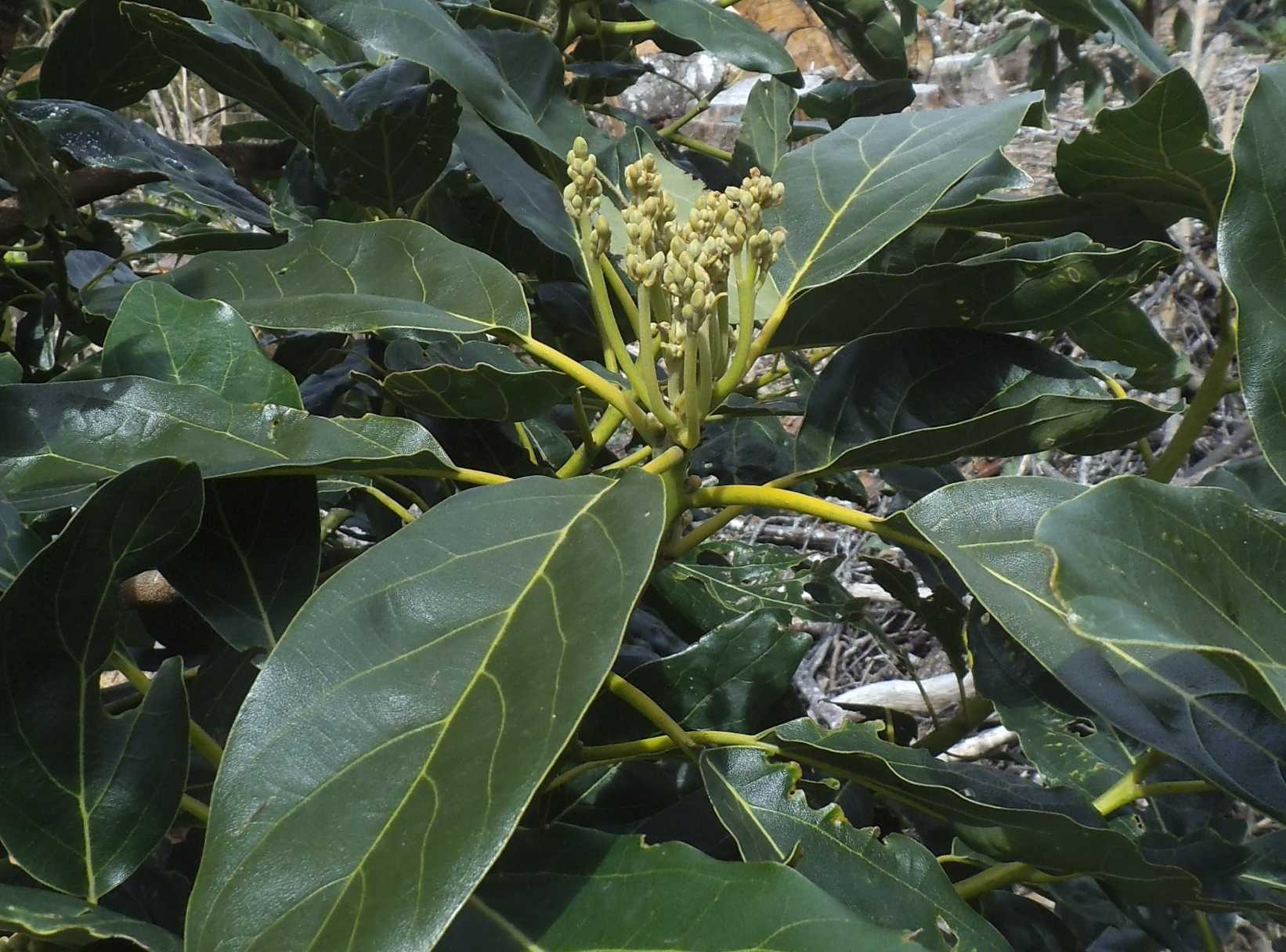
Young Carmen Hass flowering in early june 2013 Carmen Hass flowering in early march 2014
Experience here has seen lighter flower panicles develop over autumn and winter, but it is rare for fruit to set. Most of those that do set fall off. Not only is the weather colder, but there are almost no pollinating insects active. But exactly how Carmen will behave in other growing areas of New Zealand is yet to be seen.
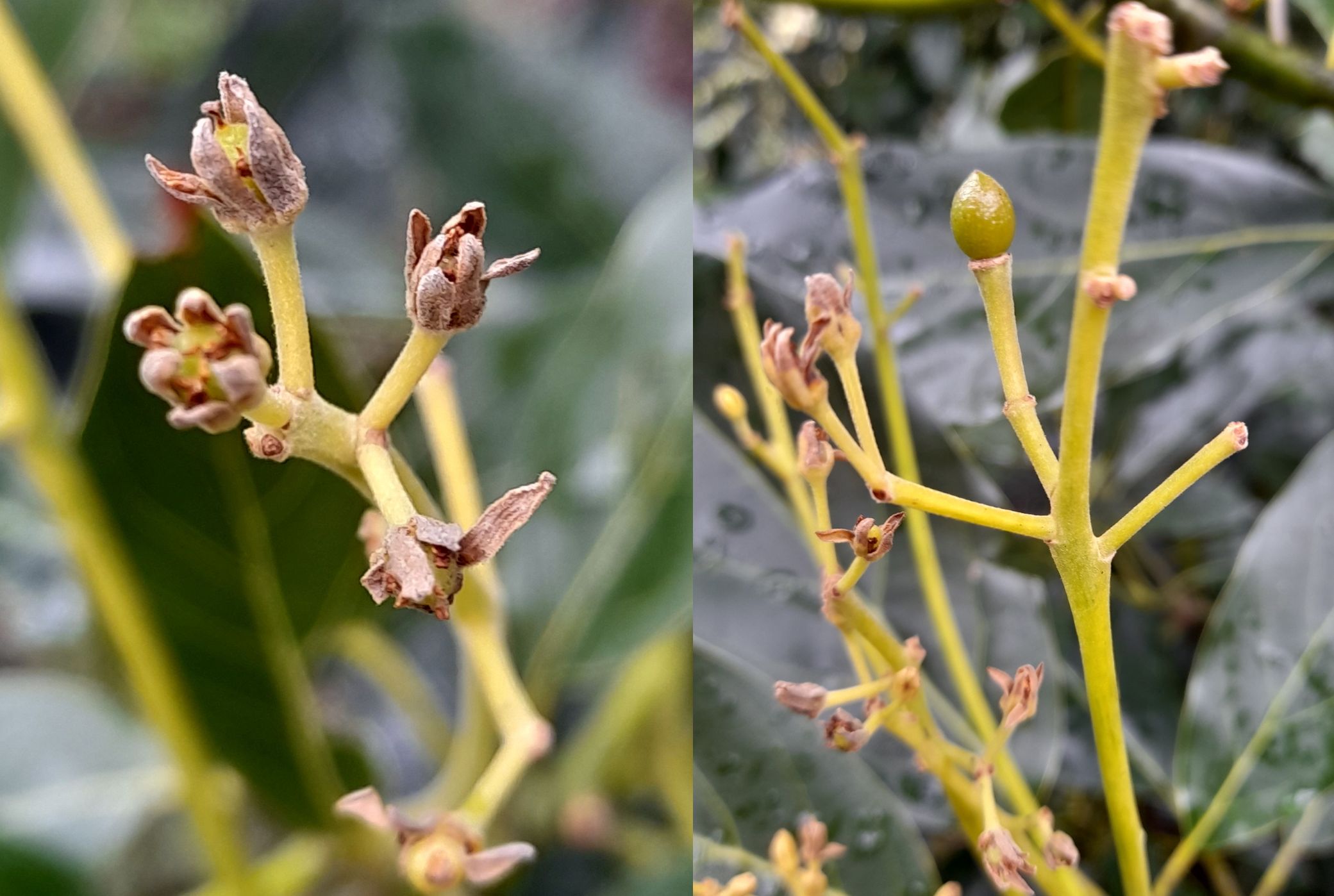
'Initial' fruit set late June/early July fruit set 2023.
The fruit
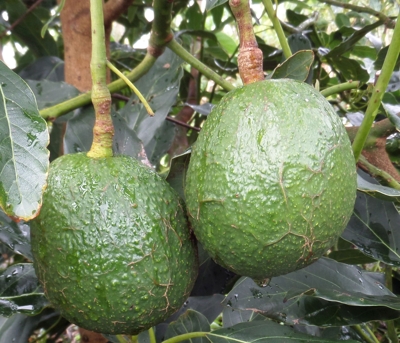
'Round' autumn set Carmen Hass fruit in early winter
Fruit from late summer and autumn 'off-season' bloom in 'normal' Hass mature about late winter the next year. These are sold in the supermarkets as 'winter Hass', although they don't look much like Hass at all, being rounder and somewhat shiny. Winter-mature Carmen fruit are similar in appearance to these Hass off-bloom 'loca' fruit. In some years they are oval and shiny and don't mature until spring, when the fruit become dull. In warmer winters the fruit are rounder, and become sufficiently mature in late winter, at which point the shiny skin becomes dull, and sometimes a slight purplish blush. In warmer avocado growing countries the fruit are typically globular and become dull in winter, suggesting fruit shape and commencement of maturity is influenced by winter temperatures. In contrast, main Hass season Carmen fruit are identical to Hass, if sometimes a bit smaller (200 to 285 grams) if the main season crop is heavy. In some parts of South Africa Carmen comes in at the same size range as Hass (190 to 305 grams).
The flavor of the (winter picked) off-season bloom 'normal' Hass in New Zealand is poor, in my experience so far. It is likely these still shiny fruit should have been left longer on the tree, however. In contrast, the winter fruit of Carmen-Hass (ripe at exactly the same time as the off-bloom fruit of 'normal Hass'), is said to have fruit quality as good as main crop (summer) Hass. This has been the experience in Mexico, at least. It is almost true here. In 2017 dull fruit picked in late july ripened in 9 days in a bag with an apple. It was almost as good as a normal summer season Hass, oily, excellent texture; the flavor was good, but not quite up to the nutty depth of a summer season Hass. By late September 2017, fruit quality was outstanding - slightly dry flesh, very oily, superb flavor.
Whether Carmen Hass or 'normal' Hass in an aberrant off-bloom phase, the phenomenon of off-bloom 'Hass'/Carmen flowering in late summer-early autumn should give identical fruit quality. The key is to acknowledge that each year the proper time of maturity may change; the only reliable guide is a change from shiny to dull appearance - no matter how long that takes.
Fruiting
Young trees perform differently to older trees. In some years, young trees may 'skip' the mid summer flowering, and flower and fruit exactly like any normal Hass.In South Africa, the winter crop may make up as much as 40% of the total of the 2 crops. In parts of South Africa it has been found to be a relatively consistent bearer, in spite of carrying 2 crops, and the main season crop is also several weeks earlier than Hass. California (and Mexico) have had different experiences. There, the degree of off-season bloom is affected by the size of the main crop. Heavier main crops result in less flowering in late summer-autumn and a light crop. Some trees within an orchard simply don't have an off-season flowering if they had a heavy main season crop. Others may skip the late summer flowering and have a winter flowering - which rarely sets any fruit.
A test plantings in Northern New Zealand was made in 2006, but, for a variety of reasons, have not established well as at 2012. The Bay of Plenty and Gisborne plantings have been successful, and will hopefully be informative.
As of 2017, the trees here have settled into a pattern where the 'conventional' crop is much larger than the late winter crop.
Management
We are attempting to keep the trees here small - no more than 3 meters. Well fed Carmen trees here flush and flower almost continuously. The winter flowers don't set, so are useless, in my opinion. Vigorous flushes - a feature of Carmen here - are counterproductive. Therefore we prune new flushes robustly, aiming for weaker new growth in the knowledge that formation of flower buds is not inhibited. We happily prune off both spent and developing flowering branches in late July, in the knowledge that fruit set didn't happen in the first case, and is unlikely in the last.